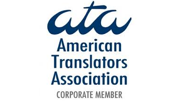June 8, 2015 by Rossella Mastropietro
Editing and subtitling videos has always been a hobby of mine. In a world where teenagers can build a career by posting Youtube videos and have their vlog, parodies and interviews subtitled for the larger audience to enjoy, it is important for companies to be present on the different platforms in multilingual format and make content accessible to the largest audience possible.
Subtitling is divided into two types: subtitling within the same language, for the deaf and hard of hearing (also called captioning), and subtitling across languages, which means having the audio transcribed, translated then put into subtitling format.
At Rosetta we are usually able to provide you with a completed written translation of up to 5,000 words within 2 business days. If you want your translation to then be put into subtitles and burnt on a video (meaning receiving one final video with the subtitles appearing on it), for a short video of 5 minutes, it takes usually 5 additional business days.
Even for time cueing the translation and providing it with a .srt document, we would need that much time to deliver. Why does subtitling takes so long? The turnaround might not always sounds reasonable to our client for short videos, so let’s take a ride through the Subtitling process to better understand what’s happening backstage. All on board!
Receiving the material
If you need subtitles to be burnt on your video before sharing it with your audience, we need to receive the final version of your video in high quality, ideally in .mp4, .mov or .avi format. What with videos being usually large files, depending on the length and the resolution of the footage it can takes up to a couple of hours to just upload and download on!
Requirements, resolution, format and discussing any technical specifications (of the source file and the target one) are checked and approved with the client at this stage.
‘Spotting’ of the footage and transcription
Before starting the translation, the team identifies the IN and OUT times of each title and portion of text (time-cueing), divide the speech up in appropriate ‘blocks’ of two lines (to make it easy to read for the audience) and compress where necessary (you don’t want half of the screen to be covered with text obviously). We check that the reading speed is consistent and make sure that everything is reflected on the transcription (several speakers? background noise?). This is presented as a written file (called the ‘master file’), and it means that the team needs to review the entire footage to match the time with each portion of text. The longer the footage is, the longer the time-cueing will take.
Time-cueing is very time consuming and is a work of precision. It implies that you have to pause and review the work done several times and make adjustment in order to avoid gaps or lags on screen at a later stage. This stage is crucial for the translator as well as it will give them a clear idea of how long the sentence should be in the target language to match the source, and the length of the subtitles that the audience will see.
If a sentence or speech is long, it probably has to stay on screen longer so the audience has time to read, but it also needs to match the visual and the speakers’ speed! Tricky, tricky, and you might experience some turbulence at this stage.
Export the master file and translation
A little more patience while your subs are in transit for the next stage!
In the case where a script is provided, the team can either time-cue it (in the case where the client does not require subtitles to be burnt), or translate the text into a bilingual format to identify exactly which part corresponds to which. Again, the trick is to give an accurate translation with the limited length that is imposed by the video. It might mean that a long sentence is translated as only a couple of words: translate the idea, the meaning, and the context, even tweak it if needed with transcreation to reflect the source. Just another day at the (subtitling) office J
The translation is sent to the client for approval, amendments can be made to match tone, terminology, and the file is proofread by the editor.
Burning the subtitles and final file
We burn the ‘master file’ onto the footage in a low-resolution video format so the client can first review it, make sure they like the speed, the font, and if any amendment has been correctly reflected. Once we have approval, we can provide a higher resolution video, or just import the amended version back into the subtitling software, finalize it and export the titles in the required format. This applies for example if the client needs only the.SRT file to upload it into their video on Youtube. Youtube has an option that can switch the subtitles on or off, and you can upload several files to offer multilingual subtitle options to your viewers.
And voila! From a VO video to multilingual videos, the journey is now complete! We hope you enjoyed the ride.
About the Author
Rossella Mastropietro
Rossella is our Head of Office and Operations. She brings over 10 years of experience in the translation industry, helping our customers communicate seamlessly across cultural and linguistic boundaries. Rossella joined Rosetta in 2014 after completing an MSc in Translation Technology at Imperial College London… Read Full Bio
Get a Free Quote
Our Accreditations





Recent Updates
Tips for Proofreading Academic Papers
Proofreading for non-native academic authors At Rosetta Translation we regularly receive requests to proof academic papers or research material. Most of these requests are from researchers whose work is written in English, yet they are not native speakers of English. Proofreading academic… Read More
© 2025 All Rights Reserved
Rosetta Translation, 133 Whitechapel High St, London E1 7QA · 0207 248 2905
Comments
Add Comment